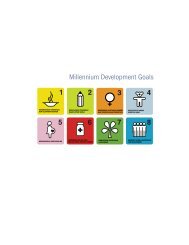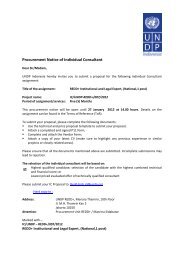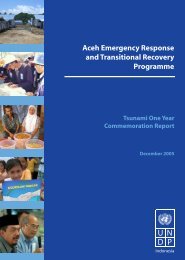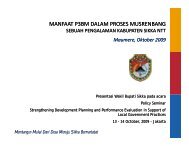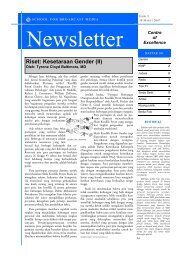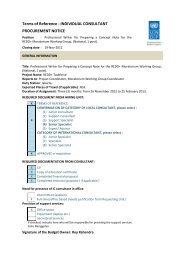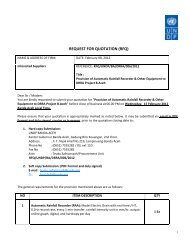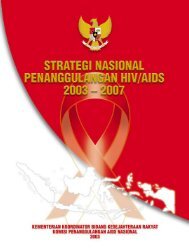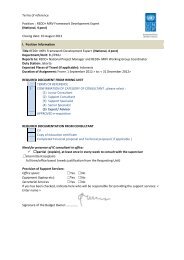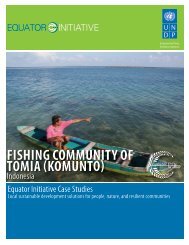Community Livelihoods And Civil Society Organisations In - UNDP
Community Livelihoods And Civil Society Organisations In - UNDP
Community Livelihoods And Civil Society Organisations In - UNDP
Create successful ePaper yourself
Turn your PDF publications into a flip-book with our unique Google optimized e-Paper software.
Table 4.<br />
Key formal education problems – an overview of common findings<br />
Aspect<br />
Education<br />
levels<br />
Facilities and<br />
services<br />
Common findings from the villages assessed<br />
• <strong>In</strong> most villages the average education level is<br />
primary/elementary (SD)<br />
• <strong>In</strong> most villages parents are not involved in the school or in<br />
formal education of their children<br />
• Literacy varies, both between children and adults and from<br />
village to village<br />
• <strong>In</strong> some villages families do not encourage children to attend<br />
school – some have other priority economic/productive<br />
activities; some do not have a culture or history of formal<br />
education<br />
• <strong>In</strong> most villages families very much want better education for<br />
their children and lament this is not happening<br />
• There are almost no vocational or further education<br />
opportunities for school drop outs and other groups such as<br />
women<br />
• All villages assessed had primary/elementary (SD) school<br />
buildings with varying numbers of classrooms<br />
• There is rarely a full cohort of teachers present, working in the<br />
village schools<br />
• Some villages have schools but no teachers or no books<br />
• Many districts do not have middle schools<br />
Funding • Some infrastructure is ‘delivered’ from outside, paid for from<br />
government funds<br />
• Many villages have YPK, YPPK or YPPGI (church) schools but<br />
how these are funded was not discussed in the reports<br />
Ownership • Degrees of community ‘ownership’ of schools vary<br />
Needs • Reliable presence of teachers working in the schools<br />
• Better engagement of parents in the school system<br />
• Access to the next level of education, in most cases middle<br />
school or high school<br />
3.4 Other issues raised<br />
<strong>In</strong> addition to the abovementioned issues about how infrastructure and basic education and<br />
health services are provided to village populations, and how current government processes<br />
and programs do not generally translate to feelings of ownership or improved livelihoods,<br />
amid the NGOs’ analyses of community livelihoods, the issue of ‘pendampingan’ is raised<br />
several times. ‘Pendampingan’ is a term that is very popular amongst government and civil<br />
society actors in Papua alike and merits some consideration in this summary document. It<br />
literally means ‘accompaniment’ and refers variously to technical assistance, extension,<br />
support or guidance. An important nuance, however, to the way that the NGOs use the term<br />
is the idea of companionship, partnering or a kind of ‘mutual presence’. The quality of<br />
‘pendampingan’ appears critical to the success of any type of activity or intervention in the<br />
villages assessed.<br />
21



